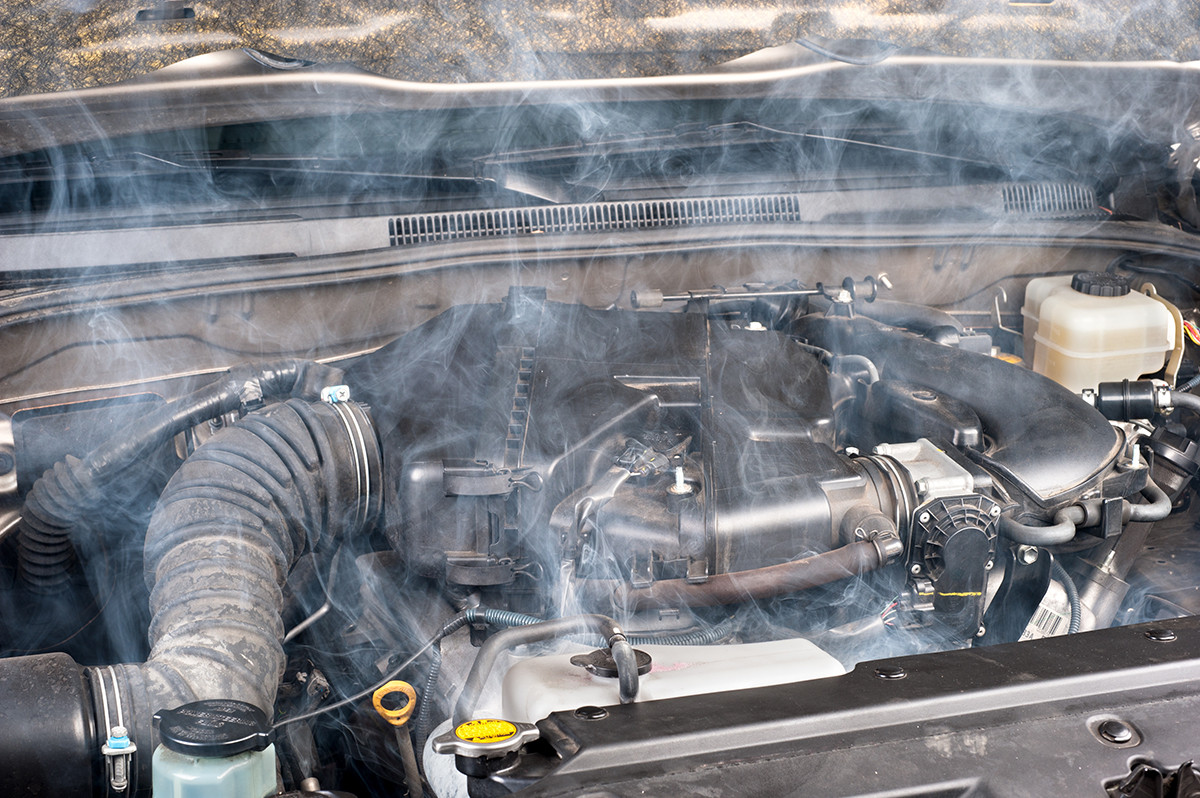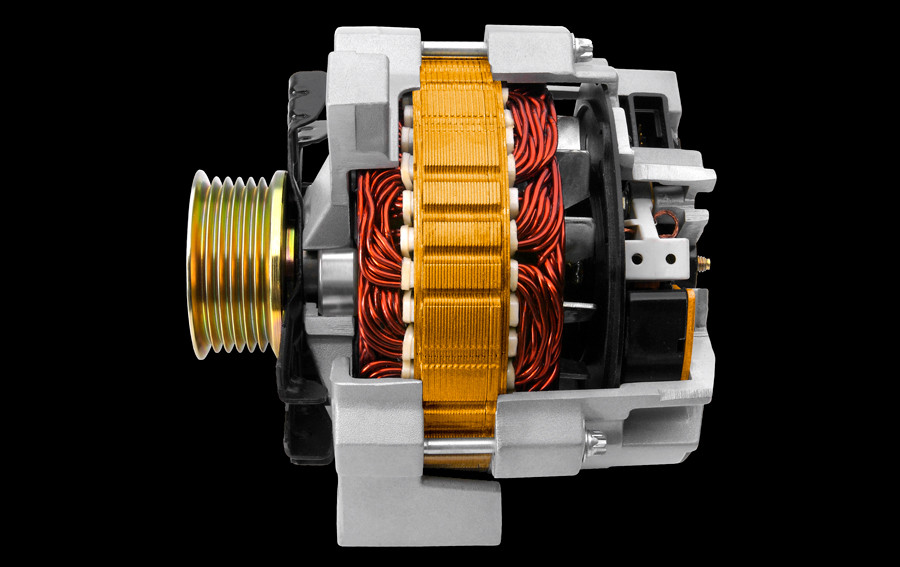**How to Fix a Car Fuse: A Comprehensive Guide**
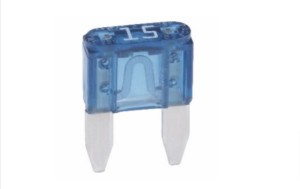
Fixing a car fuse is a simple task that any car owner can handle. CARDIAGTECH.BIZ provides the tools and expertise you need to diagnose and replace faulty fuses, ensuring your vehicle’s electrical systems function flawlessly. Let’s explore how to replace a car fuse, understand different fuse types, and troubleshoot common electrical issues to keep your vehicle running smoothly, enhancing your understanding of auto repair and electrical maintenance.
1. Understanding Car Fuses
What is a car fuse and what does it do?
A car fuse is a safety device designed to protect your vehicle’s electrical circuits from overcurrent. According to a study by the National Highway Traffic Safety Administration (NHTSA), electrical malfunctions are a significant cause of vehicle fires, highlighting the importance of functional fuses. Fuses contain a thin wire that melts and breaks the circuit when excessive current flows through it, preventing damage to more expensive components. Understanding the different types of fuses and their amperage ratings is crucial for effective troubleshooting and repair.
1.1. Types of Car Fuses
What are the different types of car fuses available?
There are several types of car fuses, each designed for specific applications and current levels. The most common types include:
- Blade Fuses: These are the most standard type in modern vehicles, featuring a plastic body with two metal prongs.
- Mini Blade Fuses: Smaller versions of blade fuses, used in compact spaces while providing the same protection.
- Glass Tube Fuses: Older style fuses with a glass casing, often found in classic cars.
- High-Current/Mega Fuses: Designed for high-amperage applications like starters and alternators.
- Maxi Fuses: Larger blade fuses used for high-energy systems.
Understanding these different types helps you select the correct replacement fuse for your vehicle. CARDIAGTECH.BIZ offers a wide range of fuses to meet every need, ensuring your vehicle’s electrical systems are protected.
1.2. Amperage Ratings
Why is the amperage rating of a car fuse important?
The amperage rating of a car fuse is critical because it indicates the maximum current the fuse can handle before blowing. According to the Society of Automotive Engineers (SAE), using a fuse with a higher amperage rating than specified can lead to electrical damage and even fires. Always replace a blown fuse with one of the same amperage rating to ensure the circuit is properly protected. CARDIAGTECH.BIZ provides fuses with clearly marked amperage ratings for easy identification and replacement.
1.3. Fuse Box Locations
Where can I find the fuse box in my car?
Fuse boxes are typically located in the passenger compartment, engine bay, or sometimes in the trunk. The exact location can vary depending on the make and model of your vehicle. Consult your owner’s manual for the specific location of the fuse boxes in your car. Each fuse box usually has a diagram indicating which fuse corresponds to which electrical circuit. CARDIAGTECH.BIZ can help you locate the correct fuse box and identify the fuse you need to replace.
2. Identifying a Blown Fuse
How can I tell if a car fuse is blown?
Identifying a blown fuse is crucial for diagnosing electrical issues in your vehicle. A blown fuse can cause various problems, from non-functioning lights to a completely dead system. There are several methods to identify a blown fuse, including visual inspection and using a multimeter.
2.1. Visual Inspection
What does a blown fuse look like?
Visually inspecting a fuse is often the quickest way to determine if it’s blown. Look for these signs:
- Melted Filament: The most common sign is a broken or melted metal filament inside the fuse.
- Discoloration: The plastic casing of the fuse may be discolored or blackened.
- Physical Damage: Cracks or breaks in the fuse body can also indicate a blown fuse.
However, a visual inspection isn’t always foolproof. Sometimes the damage is not easily visible, making it necessary to use a multimeter for a more accurate assessment. CARDIAGTECH.BIZ recommends having a multimeter on hand for thorough diagnostics.
 Blown car fuse with melted filament
Blown car fuse with melted filament
This image shows a typical blown blade fuse with a clear break in the internal filament, indicating that the fuse has failed.
2.2. Using a Multimeter
How do I use a multimeter to check a car fuse?
A multimeter is a reliable tool for checking fuse continuity. Here’s how to use it:
-
Set the Multimeter: Turn on the multimeter and set it to the continuity setting (usually indicated by a diode symbol or an Ohm symbol).
-
Test the Fuse: Touch one probe to each of the fuse’s metal contacts.
-
Read the Results:
- If the multimeter beeps or shows a reading close to zero ohms, the fuse is good.
- If the multimeter displays “OL” or shows no continuity, the fuse is blown.
According to a study by the American Society for Testing and Materials (ASTM), using a multimeter provides the most accurate method for testing fuse continuity.
2.3. Circuit Testers
Are circuit testers a reliable alternative to multimeters for checking fuses?
Yes, circuit testers are a simpler alternative to multimeters for checking fuses. To use a circuit tester:
-
Connect the Clip: Clip the circuit tester to a grounded metal surface.
-
Probe the Fuse: Touch the probe to the test points on top of the fuse.
-
Check the Light:
- If the light illuminates, the fuse is good.
- If the light does not illuminate, the fuse is blown.
Circuit testers are particularly useful for quick checks, but multimeters provide more detailed information and can be used for a wider range of electrical diagnostics. CARDIAGTECH.BIZ offers high-quality multimeters and circuit testers to suit all your diagnostic needs.
3. Replacing a Car Fuse: Step-by-Step Guide
What is the proper procedure for replacing a car fuse?
Replacing a car fuse is a straightforward process that can be done at home with a few simple tools. Follow these steps to ensure a safe and effective replacement.
3.1. Gather Necessary Tools
What tools do I need to replace a car fuse?
Before you begin, gather the following tools:
- New Fuse: Ensure it’s the correct type and amperage rating.
- Fuse Puller or Needle-Nose Pliers: For removing the old fuse.
- Multimeter or Circuit Tester: To confirm the fuse is blown.
- Screwdriver or Socket Set: For removing fuse box covers or securing high-current fuses.
- Owner’s Manual: To identify the correct fuse location and rating.
CARDIAGTECH.BIZ offers complete fuse replacement kits, including all the necessary tools and a variety of fuses, making the job easier and more efficient.
3.2. Turn Off the Ignition
Why should I turn off the ignition before replacing a fuse?
Always turn off the ignition and remove the key before replacing a fuse to prevent electrical shorts and potential injury. It’s also a good idea to disconnect the negative battery cable for added safety, as recommended by the National Electrical Safety Code (NESC).
3.3. Locate the Blown Fuse
How do I find the specific fuse that needs to be replaced?
Refer to your vehicle’s owner’s manual for the fuse box location and fuse diagram. The diagram will identify which fuse corresponds to each electrical circuit. Use the visual inspection or multimeter test to confirm the blown fuse.
3.4. Remove the Blown Fuse
What is the best way to remove a blown fuse from the fuse box?
Use a fuse puller or needle-nose pliers to gently remove the blown fuse. Grip the fuse securely and pull it straight out. Avoid bending the surrounding fuses or damaging the fuse box.
3.5. Install the New Fuse
What should I keep in mind when installing the new car fuse?
Ensure the new fuse has the correct amperage rating. Align the prongs of the new fuse with the slots in the fuse box and gently push it in until it is fully seated. Using the wrong amperage rating can lead to further electrical problems or even a fire.
3.6. Test the Circuit
How can I verify that the new fuse has fixed the problem?
After installing the new fuse, turn the ignition on and test the circuit to ensure it is functioning correctly. For example, if the fuse was for the headlights, turn them on to see if they now work. If the fuse blows again immediately, there may be an underlying electrical problem that needs further diagnosis.
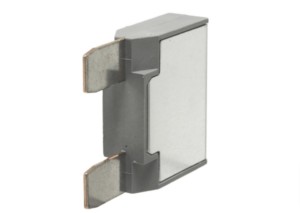 Replacing a blade-style car fuse
Replacing a blade-style car fuse
This image demonstrates the proper technique for replacing a blade-style fuse using a fuse puller, ensuring the new fuse is correctly seated in the fuse box.
4. Troubleshooting Common Fuse Problems
What are some common reasons why car fuses blow frequently?
Fuses are designed to protect electrical circuits, but if a fuse blows repeatedly, it indicates an underlying problem. Here are some common causes of frequent fuse failures:
4.1. Overloads
What is an electrical overload and how does it affect car fuses?
An overload occurs when a circuit draws more current than it is designed to handle. This can happen if too many devices are connected to a single circuit or if a component is drawing excessive power. Overloads cause the fuse to blow as it tries to protect the circuit from overheating.
4.2. Short Circuits
What is a short circuit and how can it cause a fuse to blow?
A short circuit occurs when there is an unintended path for current to flow, often due to damaged or exposed wiring. Short circuits can cause a sudden and massive surge of current, instantly blowing the fuse. According to the Institute of Electrical and Electronics Engineers (IEEE), short circuits are a leading cause of electrical failures in vehicles.
4.3. Ground Faults
How does a ground fault differ from a short circuit and how does it impact fuses?
A ground fault happens when a live wire comes into contact with a grounded surface, such as the vehicle’s chassis. This creates an unintended path for current, similar to a short circuit, causing the fuse to blow. Ground faults can be more challenging to diagnose than short circuits, as the symptoms may be intermittent.
4.4. Component Failure
Can a faulty component cause a fuse to blow repeatedly?
Yes, a failing component can draw excessive current, causing the fuse to blow repeatedly. For example, a failing electric motor or a shorted-out sensor can overload the circuit. Diagnosing component failures often requires specialized tools and expertise.
4.5. Wiring Issues
How do damaged or deteriorated wires contribute to fuse problems?
Damaged or deteriorated wiring can cause shorts, ground faults, and increased resistance, all of which can lead to blown fuses. Inspecting the wiring for signs of damage, such as fraying, cracking, or corrosion, is essential for troubleshooting fuse problems.
5. Advanced Diagnostics and Solutions
When should I seek professional help for car fuse issues?
While many fuse-related problems can be resolved with simple replacement, some issues require advanced diagnostics and professional intervention. Here are some scenarios where you should seek help from a qualified mechanic:
5.1. Repeated Fuse Failures
What steps should I take if a new fuse blows immediately after replacement?
If a fuse blows immediately after replacement, it indicates a significant underlying electrical problem. Do not continue replacing fuses, as this can cause further damage. Instead, consult a professional mechanic to diagnose and repair the issue.
5.2. Complex Electrical Problems
How do I address electrical issues that affect multiple systems in my car?
Complex electrical problems that affect multiple systems often require advanced diagnostic tools and expertise. These issues may involve the vehicle’s computer system, wiring harness, or multiple components. A professional mechanic can use specialized equipment to pinpoint the source of the problem.
5.3. Intermittent Issues
Why are intermittent electrical problems so difficult to diagnose and fix?
Intermittent electrical problems can be particularly challenging to diagnose because the symptoms come and go. These issues may be caused by loose connections, corroded terminals, or temperature-sensitive components. A professional mechanic can use advanced techniques, such as wiggle testing and thermal imaging, to identify the source of the problem.
5.4. Airbag and ABS Systems
Why is it important to have a professional handle electrical issues related to safety systems?
Electrical issues related to safety systems like airbags and ABS require specialized knowledge and caution. Incorrect repairs can compromise the functionality of these systems, putting your safety at risk. Always consult a qualified mechanic for any electrical work involving safety-critical components.
5.5. Modifying Electrical Systems
Should I consult a professional before modifying my car’s electrical system?
Modifying a vehicle’s electrical system, such as installing aftermarket accessories or upgrading components, can be complex and potentially dangerous. Improper modifications can overload circuits, damage the vehicle’s computer system, and even cause fires. Always consult a professional mechanic before making any modifications to your car’s electrical system.
6. Maintaining Your Car’s Electrical System
How can I prevent car fuse problems through regular maintenance?
Regular maintenance can help prevent fuse problems and ensure the reliable operation of your vehicle’s electrical system. Here are some maintenance tips:
6.1. Regular Inspections
How often should I inspect my car’s electrical system and fuses?
Inspect your car’s electrical system and fuses at least twice a year, or more frequently if you notice any electrical problems. Check for signs of damage, corrosion, or loose connections. Regular inspections can help you identify and address potential issues before they lead to fuse failures.
6.2. Proper Wiring Practices
What are the best practices for maintaining and repairing car wiring?
When working on your car’s electrical system, follow proper wiring practices to prevent shorts, ground faults, and other problems. Use quality connectors, properly insulate wires, and route wiring away from sharp edges and hot surfaces.
6.3. Battery Maintenance
How does battery maintenance contribute to the health of my car’s electrical system?
Proper battery maintenance is crucial for the health of your car’s electrical system. Keep the battery terminals clean and free of corrosion, and ensure the battery is properly charged. A weak or failing battery can put a strain on the electrical system and cause fuses to blow.
6.4. Avoiding Overloads
How can I prevent electrical overloads in my car?
Avoid overloading electrical circuits by limiting the number of devices connected to a single circuit. Use power strips with built-in circuit breakers to protect against overloads, and avoid using high-power accessories that can strain the electrical system.
6.5. Professional Check-ups
When should I schedule a professional check-up for my car’s electrical system?
Schedule a professional check-up for your car’s electrical system at least once a year, or more frequently if you experience any electrical problems. A qualified mechanic can use specialized equipment to diagnose and repair complex electrical issues and ensure your vehicle’s electrical system is functioning properly. CARDIAGTECH.BIZ can connect you with trusted mechanics in your area for professional electrical system services.
7. Tools and Equipment from CARDIAGTECH.BIZ
What tools and equipment does CARDIAGTECH.BIZ offer to help with car fuse and electrical repairs?
CARDIAGTECH.BIZ offers a wide range of tools and equipment to help you diagnose and repair car fuse and electrical problems. Our products are designed to meet the needs of both DIY enthusiasts and professional mechanics.
7.1. Multimeters
Why is a high-quality multimeter essential for car electrical work?
A high-quality multimeter is an essential tool for diagnosing electrical problems in your car. CARDIAGTECH.BIZ offers a variety of multimeters with features such as:
- Continuity Testing: For checking fuse continuity and identifying broken circuits.
- Voltage and Current Measurement: For measuring voltage and current levels in electrical circuits.
- Resistance Measurement: For measuring resistance in components and wiring.
- Digital Display: For easy and accurate readings.
Our multimeters are designed to be durable, reliable, and easy to use, making them ideal for both beginners and experienced mechanics.
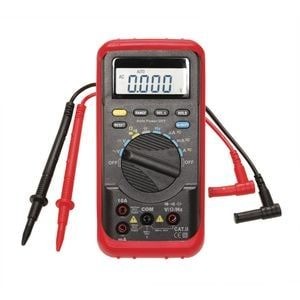 OEM Multimeter for car fuse testing
OEM Multimeter for car fuse testing
This image displays an OEM multimeter, a crucial tool for diagnosing and testing car fuses and electrical circuits, ensuring accurate readings and reliable results.
7.2. Circuit Testers
When is a circuit tester a more convenient option than a multimeter?
Circuit testers are a convenient and affordable option for quickly checking fuse continuity and identifying blown fuses. CARDIAGTECH.BIZ offers circuit testers with features such as:
- LED Indicators: For easy visual confirmation of circuit continuity.
- Ground Clips: For secure and reliable grounding.
- Durable Construction: For long-lasting performance.
Our circuit testers are simple to use and provide a quick and easy way to check fuses and basic electrical circuits.
7.3. Fuse Pullers
Why should I use a fuse puller instead of pliers to remove car fuses?
Fuse pullers are designed to safely and easily remove fuses from the fuse box without damaging the fuse or the surrounding components. CARDIAGTECH.BIZ offers fuse pullers with features such as:
- Ergonomic Handles: For comfortable and secure grip.
- Non-Conductive Material: For safe use in electrical environments.
- Compact Design: For easy storage and portability.
Our fuse pullers make fuse replacement a breeze, reducing the risk of injury or damage to your vehicle’s electrical system.
7.4. Fuse Assortment Kits
What are the benefits of having a car fuse assortment kit on hand?
A fuse assortment kit is a must-have for any car owner. CARDIAGTECH.BIZ offers fuse assortment kits with a variety of fuse types and amperage ratings to meet your needs. Our kits include:
- Blade Fuses: The most common type of fuse in modern vehicles.
- Mini Blade Fuses: Smaller versions of blade fuses for compact spaces.
- Maxi Fuses: Larger fuses for high-current applications.
- Clearly Marked Amperage Ratings: For easy identification and replacement.
- Durable Storage Case: For organized storage and portability.
Having a fuse assortment kit on hand ensures you’re always prepared for a blown fuse, saving you time and money on costly repairs.
7.5. Wiring Tools
What types of wiring tools are essential for car electrical repairs?
Wiring tools are essential for repairing and maintaining your car’s electrical system. CARDIAGTECH.BIZ offers a variety of wiring tools with features such as:
- Wire Strippers: For safely and accurately removing insulation from wires.
- Crimpers: For securely crimping connectors and terminals onto wires.
- Pliers: For gripping, bending, and cutting wires.
- Electrical Tape: For insulating and protecting wires.
Our wiring tools are designed to be durable, reliable, and easy to use, making them ideal for both DIY enthusiasts and professional mechanics.
8. Understanding Electrical Diagrams
How do I read and interpret car electrical diagrams?
Understanding electrical diagrams is crucial for diagnosing and repairing complex electrical problems in your car. Electrical diagrams provide a visual representation of the electrical circuits and components in your vehicle, making it easier to trace circuits and identify potential issues.
8.1. Symbols and Conventions
What are the common symbols and conventions used in car electrical diagrams?
Car electrical diagrams use a variety of symbols and conventions to represent electrical components and circuits. Some common symbols include:
- Fuses: Represented by a zigzag line inside a rectangle.
- Resistors: Represented by a zigzag line.
- Capacitors: Represented by two parallel lines.
- Switches: Represented by a line connecting to another line or a circle.
- Grounds: Represented by a series of horizontal lines.
Understanding these symbols and conventions is essential for reading and interpreting electrical diagrams.
8.2. Circuit Tracing
How do I trace a circuit using an electrical diagram?
Tracing a circuit using an electrical diagram involves following the lines and symbols to identify the components and connections in the circuit. Start at the power source (usually the battery) and follow the circuit to the component you are interested in. Pay attention to the symbols and labels along the way to identify the function of each component.
8.3. Identifying Components
How can I use electrical diagrams to locate specific components in my car?
Electrical diagrams often include labels and identifiers that correspond to the physical location of the components in your car. Use these labels to locate the components you are interested in. Consult your vehicle’s service manual for additional information on component locations.
8.4. Troubleshooting with Diagrams
How can electrical diagrams help me troubleshoot electrical problems?
Electrical diagrams can be invaluable for troubleshooting electrical problems in your car. By tracing the circuit and identifying the components, you can pinpoint potential sources of the problem, such as blown fuses, broken wires, or faulty components. Use a multimeter or circuit tester to verify the continuity and voltage levels in the circuit to further narrow down the problem.
9. Safety Precautions
What safety measures should I take when working with car electrical systems?
Working with car electrical systems can be dangerous if proper safety precautions are not followed. Always take the following safety measures to protect yourself and your vehicle:
9.1. Disconnect the Battery
Why is it important to disconnect the battery before starting electrical work?
Disconnect the negative battery cable before starting any electrical work on your car. This will prevent electrical shorts and potential injury. Use a wrench to loosen the nut on the negative battery terminal and carefully remove the cable.
9.2. Use Insulated Tools
Why should I use insulated tools when working with car electrical systems?
Use insulated tools when working with car electrical systems to prevent electric shock. Insulated tools have a protective coating that prevents electricity from flowing through the tool and into your body.
9.3. Wear Safety Glasses
How can safety glasses protect my eyes during car electrical repairs?
Wear safety glasses to protect your eyes from sparks, debris, and other hazards when working with car electrical systems. Safety glasses provide a barrier between your eyes and potential hazards, reducing the risk of injury.
9.4. Avoid Water
Why should I avoid working with electrical components in wet conditions?
Avoid working with electrical components in wet conditions, as water can conduct electricity and increase the risk of electric shock. If you must work in wet conditions, take extra precautions to protect yourself from electric shock.
9.5. Follow Instructions
Why is it important to follow manufacturer’s instructions when installing electrical components?
Always follow the manufacturer’s instructions when installing electrical components in your car. Improper installation can damage the components, create electrical hazards, and void the warranty.
10. Call to Action
Ready to tackle your car’s electrical issues with confidence?
Don’t let electrical problems keep you off the road. CARDIAGTECH.BIZ offers the tools, equipment, and expertise you need to diagnose and repair car fuse and electrical issues quickly and effectively.
- Need help choosing the right tools? Contact us via WhatsApp at +1 (641) 206-8880 for expert advice.
- Looking for high-quality multimeters, circuit testers, and fuse kits? Visit our website at CARDIAGTECH.BIZ to explore our wide selection.
- Want personalized assistance? Visit our location at 276 Reock St, City of Orange, NJ 07050, United States for hands-on support.
Don’t let electrical problems slow you down. Contact CARDIAGTECH.BIZ today and get your car back on the road safely and reliably.
FAQ: How to Fix a Car Fuse
1. What is a car fuse and why is it important?
A car fuse is a safety device that protects your vehicle’s electrical circuits from overcurrent. It’s essential for preventing damage to electrical components and reducing the risk of electrical fires. According to the NHTSA, functional fuses are critical for vehicle safety.
2. How do I know if a car fuse is blown?
You can visually inspect the fuse for a melted filament or use a multimeter to check for continuity. If the filament is broken or the multimeter shows no continuity, the fuse is blown.
3. What tools do I need to replace a car fuse?
You will need a new fuse of the correct amperage, a fuse puller or needle-nose pliers, a multimeter or circuit tester, and your vehicle’s owner’s manual.
4. Where can I find the fuse box in my car?
The fuse box is typically located in the passenger compartment, engine bay, or trunk. Consult your owner’s manual for the exact location.
5. How do I remove a blown fuse from the fuse box?
Use a fuse puller or needle-nose pliers to gently grip the fuse and pull it straight out. Avoid bending surrounding fuses.
6. What happens if I use the wrong amperage fuse?
Using a fuse with a higher amperage can cause electrical damage and increase the risk of fire. Always use a fuse with the correct amperage rating.
7. What should I do if a new fuse blows immediately after replacement?
If a new fuse blows immediately, there is likely an underlying electrical problem. Consult a professional mechanic for diagnosis and repair.
8. How can I prevent car fuse problems?
Regularly inspect your car’s electrical system, maintain proper wiring practices, keep the battery terminals clean, and avoid overloading circuits.
9. Is it safe to replace a car fuse myself?
Yes, replacing a car fuse is generally safe if you follow proper safety precautions, such as disconnecting the battery and using insulated tools.
10. When should I seek professional help for car fuse issues?
Seek professional help if you experience repeated fuse failures, complex electrical problems, or issues with safety systems like airbags and ABS.




